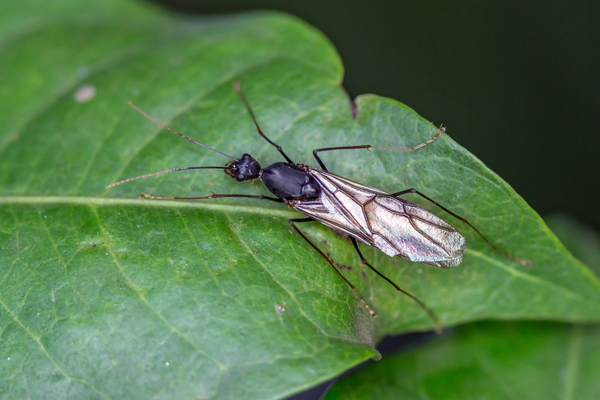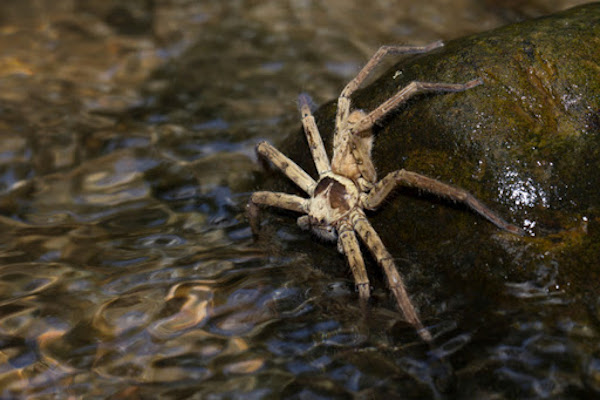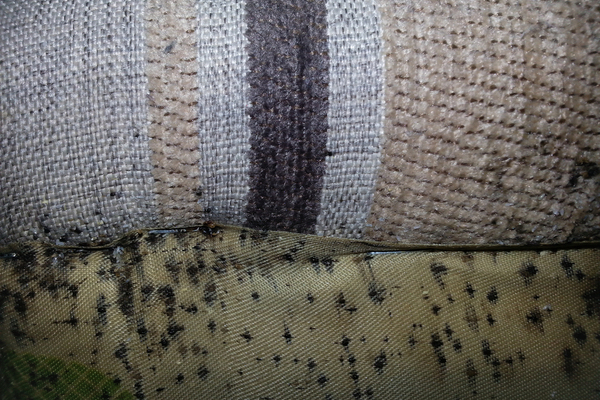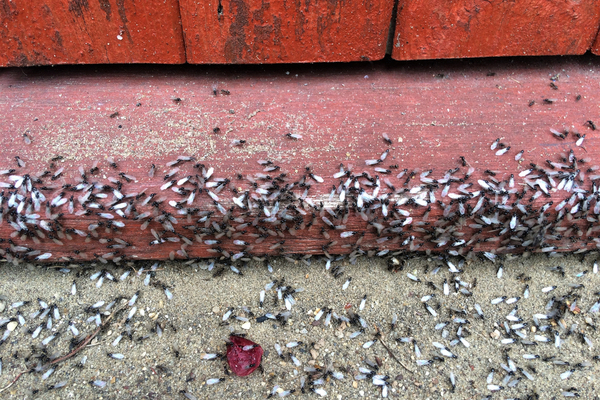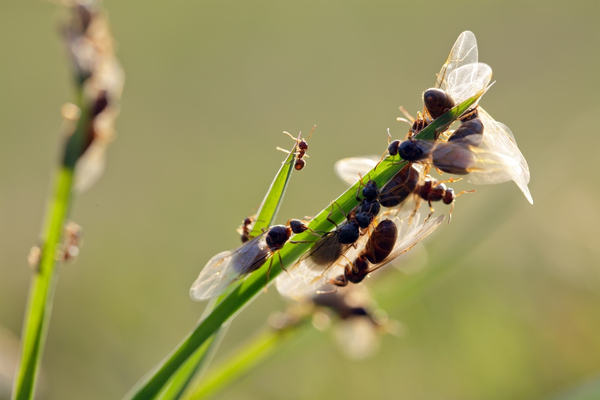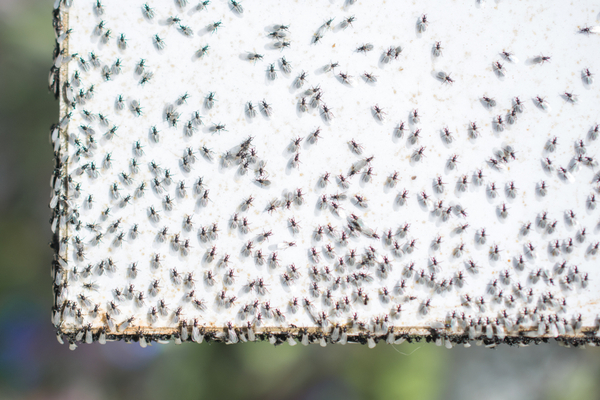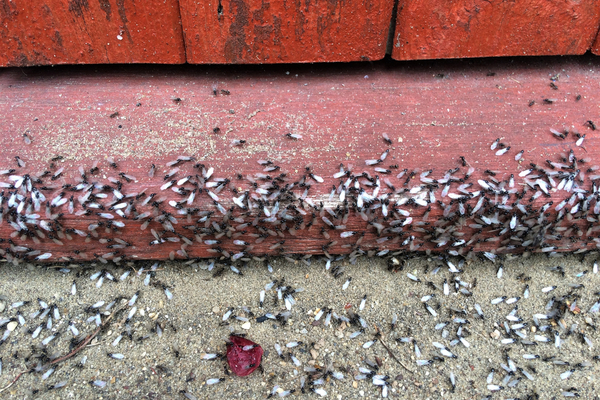Ants are one thing. You get ants. You’ve seen their mounds, watched them swarm around food, and probably even shooed them out of your kitchen. Flying ants are… another thing entirely. Are those things even ants?! Are ants supposed to be able to do that?! Why here?! Why now?!
We get being intimidated by flying ants. Particularly when there are a lot of them, and they’re flying right at you. Despite flying ants’ somewhat frightening (and sudden!) appearance, however, they’re nothing to be worried about. Here’s what you should know about flying ant swarms, and how they might affect you:
What are flying ants?
Flying ants aren’t a particular species of ant, but they are a particular caste of many ant species. Flying ants make up the reproductive caste of their ant colony, or “alates.” Alates can fly in order to leave the colony and seek out mates effectively. Ant colonies produce both male reproductive alates and winged virgin queen ant alates. Male alates seek out queens from other colonies, while queens start new colonies of their own.
Ant species like carpenter ants produce alates during mating season. Particular alate appearance may vary from species-to-species, but they’ll generally be ¼ to ⅜” long and black, dark brown, or dark red. Alate wings are clear, translucent, and unequal in length. Alates usually leave their colonies in large swarms during mating season in order to protect each other from predators. If you see flying ants near your home, then there’s probably a developing colony nearby.
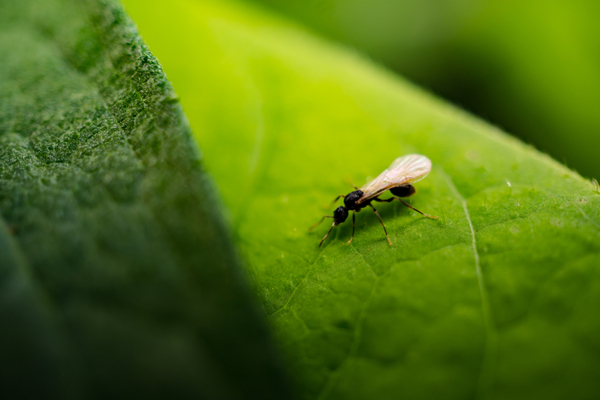
When do flying ants become active?
Last year, we wrote a blog about “flying ant day.” On flying ant day, huge swarms of alate swarms suddenly appeared all over Detroit. A version of “flying ant day” happens every year around Labor Day. Now that you know what alates are all about, it isn’t hard to guess why: mating. Every year around late summer, alates become very active very quickly in order to mate and start colonies.
Despite its relative predictability, ant mating season doesn’t start on a particular date. Instead, it begins when conditions are just right. The ideal condition for ant mating is a summer day with high temperatures, sunny weather, and no wind. When that perfect day comes along, all kinds of ant colonies start mating at once–hence the sudden swarms. Ants tend to reproduce in late summer to prepare for winter, but it isn’t the only time they reproduce. You may occasionally see swarming alates even during the “off” season.
How can flying ants affect you?
Seeing a flying ant around your home isn’t necessarily a telltale sign of ant infestation. Flying ants… can fly, after all. During mating season, ant swarms may range quite a ways from their colonies to seek mates. If you see an alate inside your home during spring or summer, it might have wandered in accidentally. In all likelihood, that ant will die before it finds a mate and you won’t need to worry about it.
Ironically, you should worry about winged ants if you see them during the off-season. If you see alates in your home during winter or early spring, you may have a larger problem. Alates shouldn’t be active at all unless it’s mating season. If they are, it’s because they don’t need to wait for nice weather to begin the mating cycle… because they’re living in a temperature-controlled environment. If you see swarms of flying ants in your home all year, then you probably have a carpenter ant infestation.
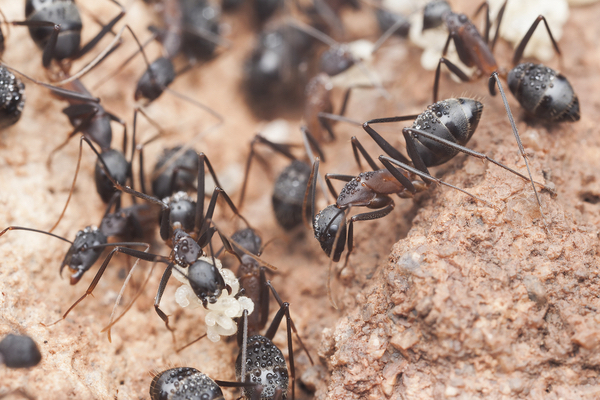
What can you do about flying ants?
Carpenter ants are one of the few ant species that could infest and mate inside your home all year. This is possible because carpenter ants hollow out tunnels in wooden structures to live inside. Carpenter ants attack moist, rotting, or unprotected wood. Infestations usually start outside and end up inside after the ants tunnel deeper through the wood. Flying ants may emerge from these tunnels at any point once they’re warm enough inside.
Carpenter ants require nearly constant moisture sources in order to remain active. They attack moist wood because it allows them to stay hydrated while they work. The best way to keep carpenter ants away, therefore, is to make sure they can’t access wet wood. Look for any sources of excess moisture around your home, including leaks, condensation, or humidity. Protect any exposed wood outside your home, too, particularly if it touches the ground. By protecting wood from carpenter ants, you’ll be able to keep alates out of your home.
Just like everything else in nature, flying ants have a specific purpose and context. Now that you know that context,
In practice, well… we believe in you! If you’re worried you have a carpenter ant infestation, give Griffin a call any time. We’ll figure out where the infestation came from, wipe it out, and make sure it can’t come back. You won’t have to worry about flying ants. In theory, or practice!

